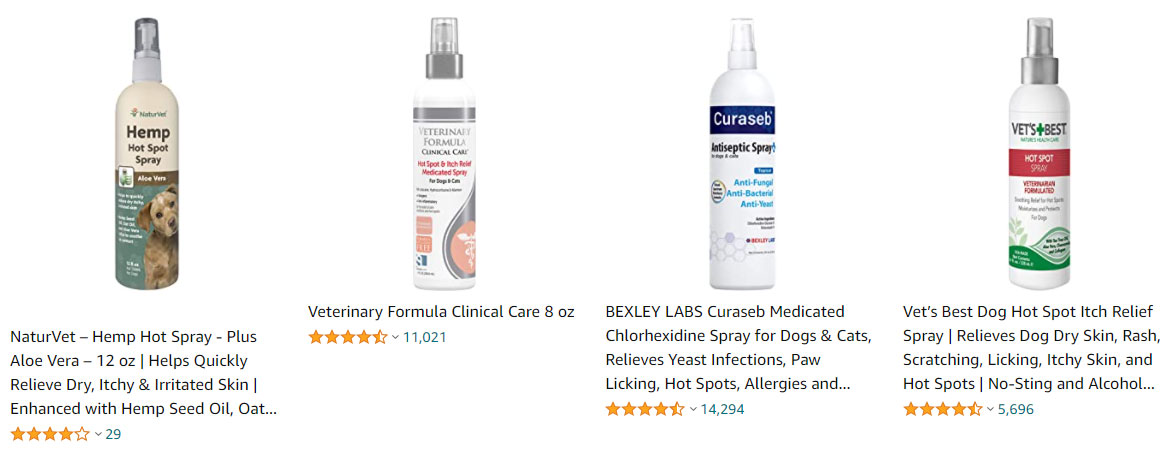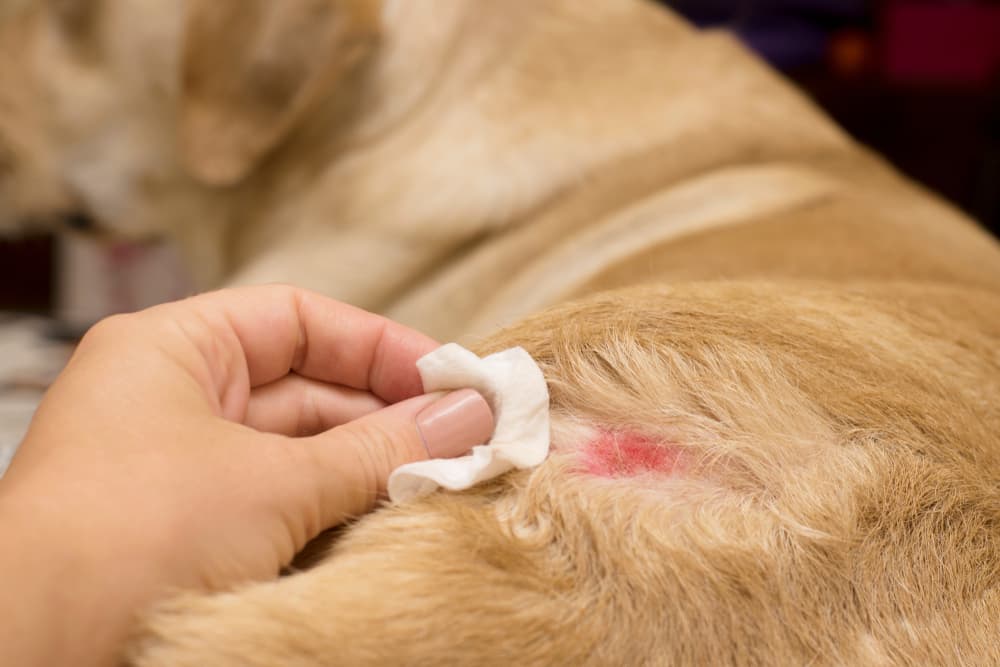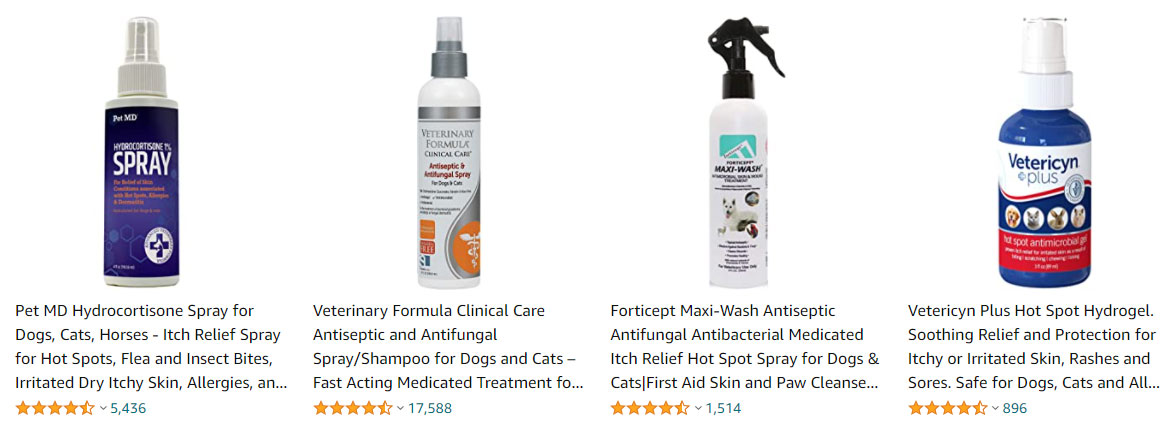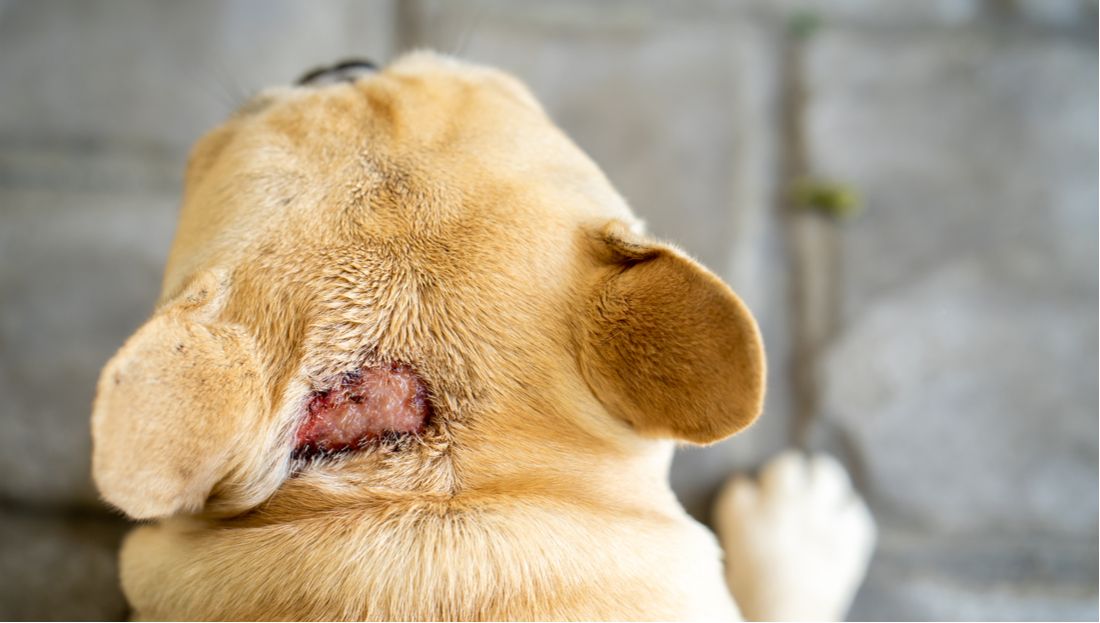Dog hot spot treatment
A hot spot is a virulent dermatitis that forms a red spot on the dog's skin, usually well-defined and very inflamed.
Although this condition is generally not very serious, it can be very itchy and painful for the dog, often causing him to scratch or lick himself intensely, which can lead to health complications. To know everything about the dog's hot spot, its causes, its treatment and how to recognize it, here is an overview of the information you need to know about this curious dermatitis, fortunately benign.
What is a dog's hot spot?
A hot spot is a very inflamed (dermatitis), red and irritated area of the dog's skin, with generally well-defined contours. At the beginning of a hot spot, there is always a small lesion, an itch, a boo-boo often harmless that the dog starts to scratch and/or lick excessively, which leads to complications.
We generally only talk about a hot spot when the dog's little boo-boo has become complicated due to self-inflicted trauma. A simple wound, lesion, pimple or localized redness is not a hot spot. A hot spot is often a few centimeters in diameter, completely or partially hairless, and may be more or less oozing, purulent, sunken, and sometimes crusty.
Some dogs get very impressive raw wounds, others will simply have red, irritated skin. Also, a hot spot can look like a simple red patch, as well as a real open wound. Itching is a typical symptom of this condition, and it is with an itch that everything starts, the dog hurting itself by scratching, biting and/or licking.
It is important to note that a dog can inflict an impressive hot spot on itself in just a few minutes if it itches intensely. The hot spot is also painful, and often has a bad smell. There are two types of hot spots: pyotraumatic folliculitis and pyotraumatic furunculosis, both of which are treated differently.
Pyotraumatic folliculitis, or simple hot spots, form large, well-circumscribed red patches, which can be recognized by their clear contours. Pyotraumatic furunculosis is presented as red patches surrounded by small pimples, papules or pustules (containing pus).
In this second case, the bacteria colonizing the hot spot do not remain on the surface, but spread into the dermis (lower layer of the skin), causing the appearance of deep pustules (furuncles).

Causes of a dog's hot spot
As mentioned above, a hot spot is caused by a dog's self-mutilation, which, overwhelmed by pain and severe itching, scratches, bites or licks itself until it causes this type of dermatitis. Of course, a dog does not inflict such wounds on itself without a valid reason, and it is usually possible to identify a primary cause in the appearance of hot spots.
Hot spots and allergies in dogs
Allergies are very often involved in skin disorders in dogs, from hair loss to redness, dry and dull hair problems, various pimples and, of course, hot spots. A common allergy in dogs is to flea saliva, a condition that even has a name: Flea Bite Allergy Dermatitis. This condition often manifests itself as multiple sores and scabs on the dog's body, caused by excessive scratching, one (or more) of which may become complicated by a hot spot. Food allergies are also potential causes of hot spots, as well as allergies to other parasites (mites, lice, etc.), mosquito bites or, more rarely, contact allergies.
Hot spots and dog parasites
Another common cause of hot spots is parasites of all kinds. We have just mentioned allergies to flea bites, but it should be noted that a dog does not have to be allergic for a parasite bite to be very itchy. Not all dogs have the same sensitivity to bites, and the pet's environment can also play a role in its reaction to an itch. Bored pets, for example, are more likely to scratch, since they have nothing else to do. Also, mosquitoes, ticks, fleas, lice, demodex, body mites and many other bugs are all suspects to consider when a dog suffers from hot spots. The small red mites that are rampant in the summer are responsible for very intense itching. Scabies mites are also known to cause unbearable itching.
Hot spots and dog wounds
Still among the most common causes of hot spots, small traumas of the dog's skin are to be taken into account. Poodles typically have sensitive skin and brushing can easily irritate them, especially on the cheeks. A scratch, a small wound caused by brambles or branches, a bee sting, and any other trauma to the skin can be complicated by a hot spot. In dogs that live near the sea, swimming in salt water can also cause more or less virulent itching when it dries.
Hot spots and dog diseases
Skin diseases, more or less common, can also be involved in the appearance of hot spots. Pyoderma, atopic dermatitis, inflammation of the anal sacs, ear infections and conjunctivitis are all conditions that can make your dog itch and cause him to mutilate himself. More rarely, skin tumors can also cause itching, resulting in hot spots. Finally, it should be noted that dogs that are stressed, anxious, suffering from pathological boredom, lack of attention and any other ailment that is detrimental to their moral well-being may develop behavioral disorders that manifest themselves as self-mutilation. Also, it is good to know that some dogs are predisposed to the hot spot, and especially to its furry form. These include the gentle Labrador and the cheerful Golden Retriever, but also, to a lesser extent, the faithful and anxious German Shepherd, a great specialist in self-mutilation...

Treatment of the dog's hot spot
The hot spot itself is often treated first before the cause of the problem is addressed. A visit to the veterinarian is essential to end the animal's suffering and help it stop hurting itself. Treatment involves shaving a large area around the hot spot and removing any scabs and scales so that the lesion does not fester.
The shearing generally allows to reveal the extent of the lesion, often underestimated by the owner, and to distinguish a folliculitis from a furunculosis. Note that this procedure is usually done under general anesthesia, the pain being such that the animal rarely allows itself to be manipulated.
Once the hot spot is well cleared, it is cleaned to remove the pus and crusts that itch the animal and harbor bacteria, then disinfected locally. Sometimes flies lay eggs in the dog's hotspots, in which case the wound may be colonized with eggs and maggots that will be removed - one by one - during this stage of care.
To avoid this, it is important to have your dog treated in the early stages of the condition, when the wound is not yet large. In the case of poytraumatic folliculitis, the dog can go home with a collar that will prevent him from continuing to mutilate himself once the hot spot is clean and disinfected.
A skin lotion will often be prescribed to soothe the itching and clean the hot spot daily, and, if the animal seems to be in pain or can't hold still, a sedative, corticosteroids or a painkiller can complete the treatment. It's crucial to keep flies away from your dog during his recovery to prevent them from laying eggs in his wound - a more common complication than you might think, especially in summer.
When a dog's hot spot has complicated into a pyotraumatic furunculosis, oral antibiotics will often be prescribed as an adjunct to eliminate the deep-seated bacteria. Corticosteroids are generally excluded from the treatment so as not to destroy the immune system of the dog's body while its dermis is deeply infected.
FAQ
How to recognize a hot spot in dogs?
A hot spot is an inflammation of the skin, more or less impressive, that can be observed on the dog's skin. Generally, the area is very red, purulent, wet, smelly, and is characterized by its well-defined contours. It causes intense pain and itching in the dog: if your dog scratches, bites or licks a red patch oozing somewhere on his body, it is probably a hot spot.
What is a dog's hot spot?
A hot spot is a self-inflicted skin lesion caused by a dog licking, scratching or biting an itchy area. It can be recognized by its well-defined contours and its red, oozing appearance.
How to treat a dog's hot spot?
Veterinary care is essential to clear, clean and disinfect the hot spot, usually under general anesthesia. Antibiotics and painkillers may be prescribed depending on the extent of the lesion to eliminate bacteria and reduce the animal's suffering.
How to avoid hot spots in dogs?
Parasites are often the cause of hot spots in dogs, so it is essential to protect your pet against fleas, lice, ticks and mites according to your veterinarian's instructions.
Rinsing a dog well after swimming in the sea is also a preventive act that should not be neglected. For dogs with sensitive skin, it is important to use soft brushes and combs when grooming to avoid causing irritation.
A dog's hot spot can sometimes be very impressive, but it is often well treated and offers the animal an excellent prognosis when properly treated. The condition becomes more troublesome when it is related to an underlying disease that is difficult to treat, as is the case with some dermatitis that owners struggle to rid their dogs of.


